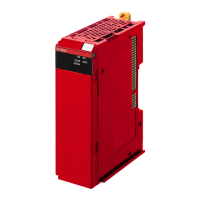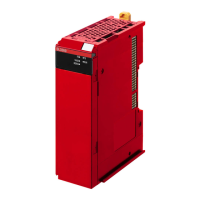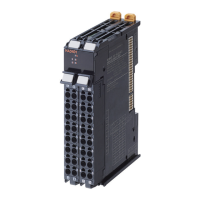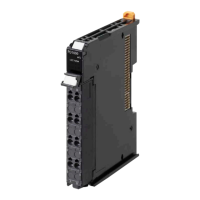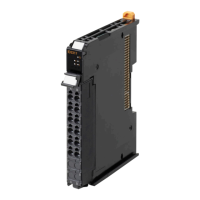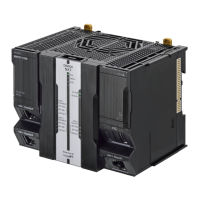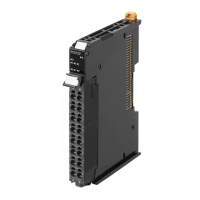8 - 37
8 Checking Operation and Actual Operation
NX-series Safety Control Unit User’s Manual (Z930)
8-6 Functions for Checking Operation
8
8-6-5 Controlling BOOL Variables, Changing Present Values, and Using
Forced Refreshing
Forced refreshing allows you to refresh external inputs and outputs with user-specified values from the
Sysmac Studio to debug the system. You execute this in the FBD editor or Watch Tab Page.
Forced refreshing is executed for the specified variables.
The state that is specified with forced refreshing is retained until forced refreshing is cleared from the
Sysmac Studio.
All forced refreshing is cleared when a fatal error occurs in the Safety CPU Unit, when a Clear All Mem-
ory operation is performed, when the operating mode is changed, when power is interrupted, or when
the project is downloaded.
You can use forced refreshing for the following data types.
Boolean: BOOL and SAFEBOOL
Bit strings: BYTE and WORD
Integers: INT, SAFEINT, DINT, and SAFEDINT
Time of day: TIME and SAFETIME
• With forced refreshing, the values of variables are overwritten with specified values and then
the safety programs are executed.
If forced refreshing is used for variables that give the results of program processing, the vari-
ables will first take the specified values, but they will then be overwritten by the safety pro-
gram.
• Depending on the difference in the forced status, the control system may operate unexpect-
edly.
Precautions for Correct Use
• Forced status for forced refreshing is not removed when you change from DEBUG mode
(STOPPED) to DEBUG mode (RUN).
• You can use forced refreshing only for the following variables: device variables assigned to
Safety I/O Units and user-defined variables.
• Even if you use forced refreshing for the input terminal to a Safety Input Unit, the forced value
will not be applied to the variable that is assigned to the I/O port in the NJ/NX-series CPU
Unit.
Forced Refreshing

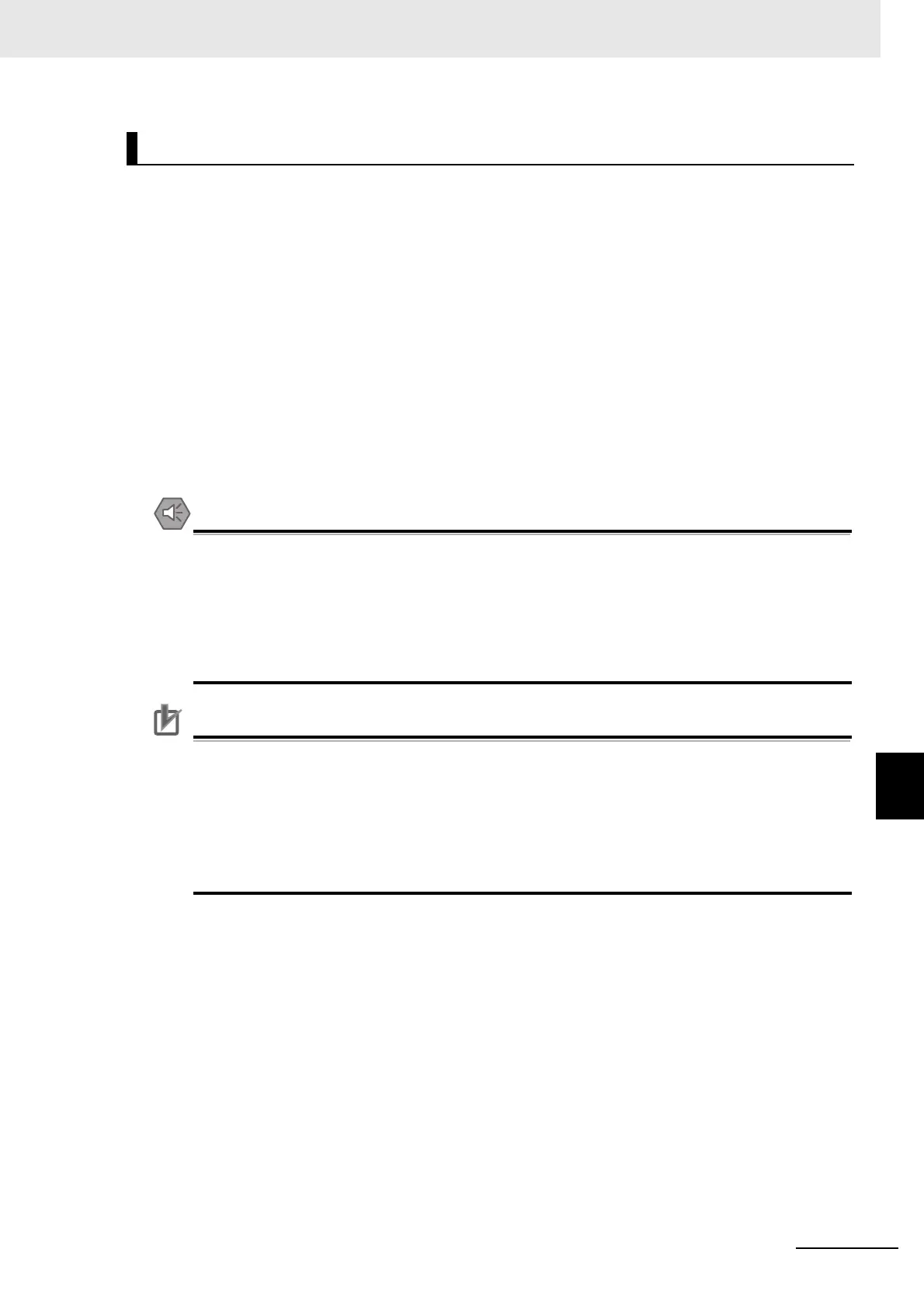